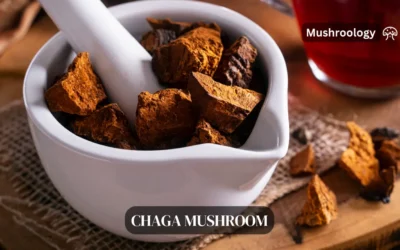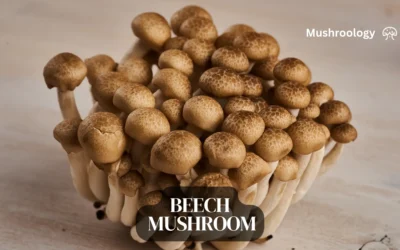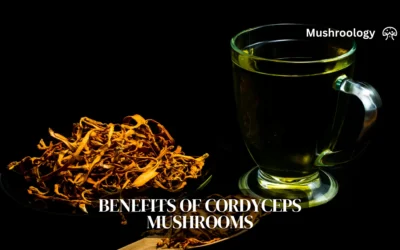Tremella fuciformis, or Snow mushrooms, often hailed as nature’s hyaluronic acid, are a treasure trove of benefits for health and beauty. These frilly, translucent fungi have been a cornerstone in Traditional Chinese Medicine for millennia, revered for their disease prevention, immunity-boosting, and skin-improving properties.
Why Learn How to Grow Tremella Mushroom?
Before we dive into the nitty-gritty of tremella cultivation, let’s talk about why you might want to learn how to grow tremella mushroom in the first place. Trust me, once you discover the benefits of this remarkable fungus, you’ll be itching to get your hands dirty.
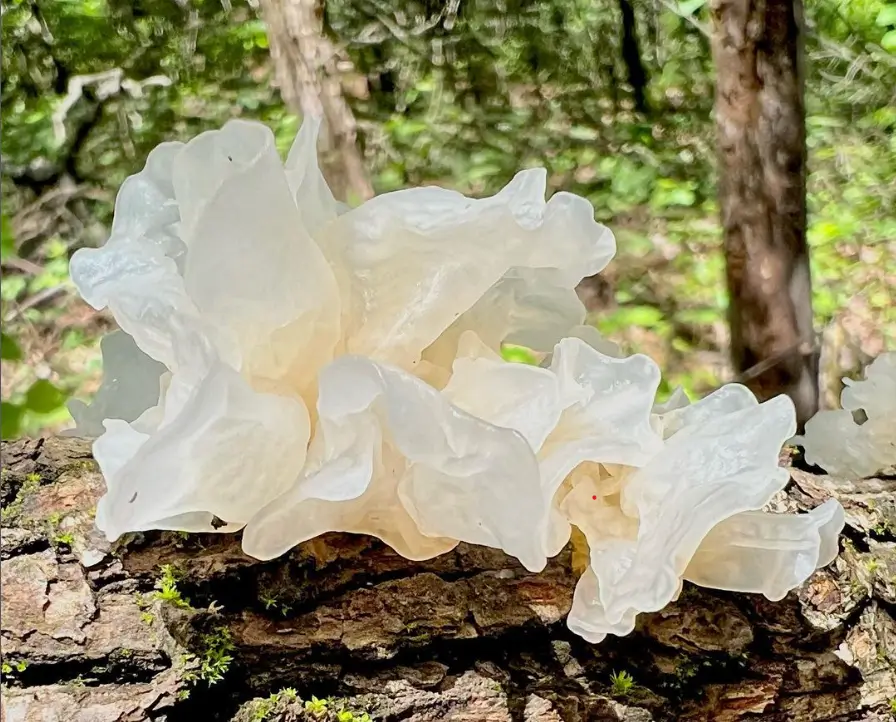
The Many Wonders of Tremella Fuciformis
Tremella fuciformis isn’t just a pretty face in the fungal world (though it is quite stunning with its translucent, snow-white frills). This mushroom is packed with potential health benefits that have made it a staple in Eastern medicine and cuisine for generations. Here are just a few reasons why learning how to grow tremella mushroom might be worth your while:
- Skin Health: Tremella is often called the “beauty mushroom” due to its potential skin-hydrating properties. It’s like nature’s own moisturizer!
- Antioxidant Powerhouse: These little fungi are loaded with antioxidants, which can help protect your cells from damage.
- Immune Support: Some studies suggest that tremella may give your immune system a helpful boost.
- Culinary Delight: In the kitchen, tremella adds a unique texture and subtle flavor to soups, desserts, and teas.
- Sustainable Hobby: Learning how to grow tremella mushroom can be an eco-friendly and rewarding hobby.
Now that you’re excited about tremella let’s roll up our sleeves and get into the fun part – learning how to grow tremella mushroom from scratch!
Getting Started: Essential Equipment for Tremella Cultivation
Before we dive into the step-by-step process of how to grow tremella mushroom, let’s make sure you have all the necessary tools and equipment. Don’t worry; you don’t need a professional lab setup to get started. Here’s a list of items you’ll need:
Basic Equipment:
- Substrate containers (glass jars or plastic bags)
- Pressure cooker or large pot for sterilization
- Spray bottle for misting
- Thermometer and hygrometer
- Clean workspace or still air box
- Gloves and face mask
- Isopropyl alcohol for sterilization
Substrate Ingredients:
- Hardwood sawdust (oak or beech work well)
- Wheat bran or rice bran
- Gypsum (calcium sulfate)
- Water
Cultivation Supplies:
- Tremella fuciformis spawn or liquid culture
- Fruiting chamber or grow tent
- Humidifier (optional but recommended)
- Small fan for air circulation
Got everything? Great! Now let’s move on to the exciting part – the step-by-step guide on how to grow tremella mushroom.
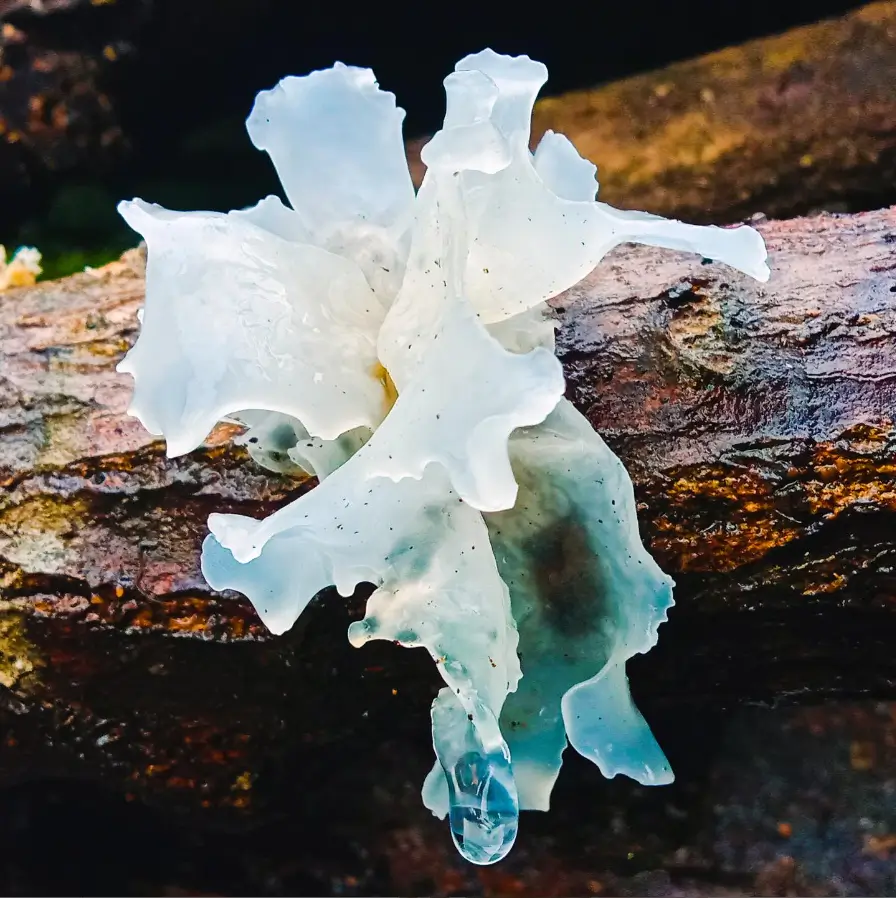
The Step-by-Step Guide: How to Grow Tremella Mushroom
Step 1: Preparing Your Substrate
The first step in learning how to grow tremella mushroom is creating the perfect home for your fungi to thrive. Tremella loves hardwood, so we’ll be using a sawdust-based substrate. Here’s a simple recipe to get you started:
- 5 parts hardwood sawdust
- 1 part wheat bran
- 1% gypsum (by weight of dry ingredients)
- Enough water to reach 60-65% moisture content
Mix these ingredients thoroughly in a large, clean container. The mixture should feel damp but not soaking wet – like a wrung-out sponge. This is crucial for successful tremella cultivation, so take your time to get it right!
Step 2: Sterilization – A Key Step in How to Grow Tremella Mushroom
Now that you’ve prepared your substrate, it’s time to sterilize it. This step is crucial in preventing contamination and giving your tremella the best chance to thrive. Here’s how to do it:
- Fill your substrate containers (jars or bags) about 2/3 full with the mixture.
- If using jars, cover the lids with foil. For bags, fold the top and secure with a paperclip.
- Place the containers in your pressure cooker or large pot.
- For a pressure cooker, sterilize at 15 PSI for 2 hours. In a pot, boil for 4-5 hours, ensuring the water doesn’t evaporate.
- Allow the containers to cool completely before handling.
Congratulations! You’ve just completed one of the most critical steps in how to grow tremella mushroom. Proper sterilization sets the stage for successful cultivation.
Step 3: Inoculation – Introducing Tremella to Its New Home
Tremella mushrooms are unique in their cultivation requirements. They are parasitic yeasts that require a host fungus, typically Hypoxylon archeri, to grow. This symbiotic relationship is essential for the successful cultivation of Tremella mushrooms.
To grow Tremella, cultivators typically need to first inoculate a substrate with Hypoxylon archeri. Once the Hypoxylon has colonized the substrate, Tremella spores or spawn can be introduced.
Mixed culture technique: A mixed-culture cultivation technique is used, involving both Hypoxylon archeri and Tremella fuciformis. The ratio of Tremella to Hypoxylon is crucial in this approach.
Now comes the exciting part – introducing the tremella culture to your sterilized substrate. This process, known as inoculation, is where the magic begins. Here’s how to do it:
- Clean your workspace thoroughly with isopropyl alcohol.
- Put on your gloves and face mask.
- If using liquid culture, shake the bottle well before use.
- Open your substrate container slightly and add about 5-10 ml of liquid culture (or a tablespoon of grain spawn).
- Seal the container immediately after inoculation.
Remember, cleanliness is key when learning how to grow tremella mushroom. Any contaminants introduced during this stage can ruin your entire batch, so take your time and be meticulous.
Step 4: Incubation – Patience is a Virtue
After inoculation, it’s time to let your tremella mycelium colonize the substrate. This process is called incubation, and it’s where your patience will be tested. Here’s what you need to know:
- Place your inoculated containers in a warm, dark place.
- Maintain a temperature between 70-75°F (21-24°C).
- Check your containers regularly for signs of growth or contamination.
- Incubation typically takes 2-4 weeks, depending on conditions.
During this time, you’ll see white, fluffy mycelium spreading through the substrate. This is a good sign and means you’re on the right track in your journey of how to grow tremella mushroom!
Step 5: Fruiting – Watching Your Tremella Bloom
Once your substrate is fully colonized, it’s time to induce fruiting. This is where you’ll see the familiar snow-white frills of tremella start to form. Here’s how to create the perfect fruiting conditions:
- Move your colonized containers to a fruiting chamber or area with indirect light.
- Maintain high humidity (80-90%) using a humidifier or regular misting.
- Keep the temperature between 68-72°F (20-22°C).
- Ensure good air circulation without direct drafts on the mushrooms.
- Mist the fruiting bodies lightly 2-3 times a day.
Within a week or two, you should start seeing small tremella fruiting bodies forming. Congratulations – you’re well on your way to mastering how to grow tremella mushroom!
Step 6: Harvesting Your Tremella Treasure
As your tremella mushrooms mature, they’ll grow into beautiful, frilly clusters. But when is the right time to harvest? Here are some tips:
- Harvest when the fruiting bodies are fully developed but before they start to dry out.
- Use clean, sharp scissors to cut the mushrooms at the base.
- Handle the mushrooms gently to avoid damaging them.
- After harvesting, you can often get a second flush by maintaining fruiting conditions.
Remember, learning how to grow tremella mushroom is an art as much as a science. With each harvest, you’ll gain experience and refine your technique.
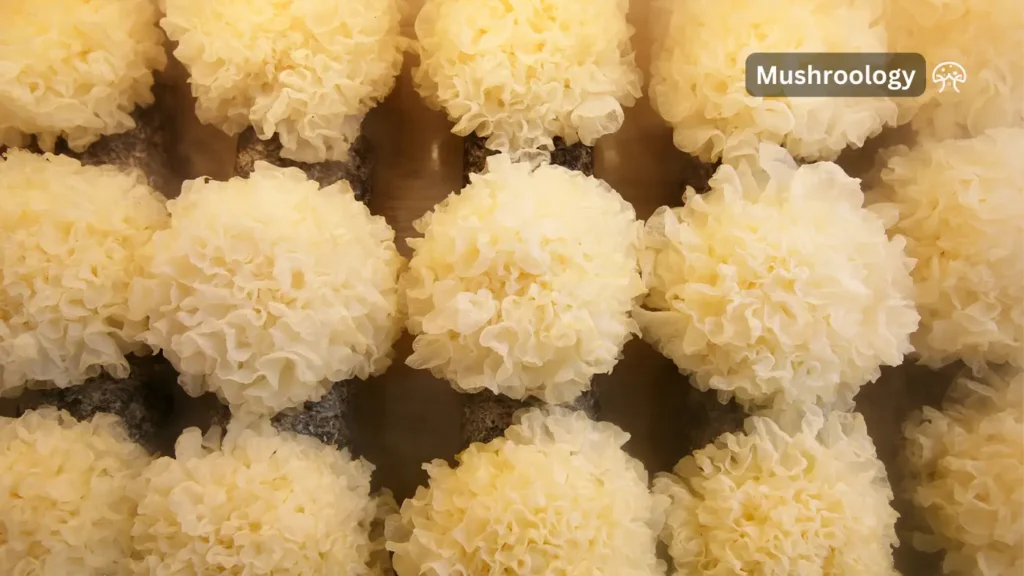
Advanced Tips for Tremella Cultivation
Now that you’ve got the basics of how to grow tremella mushroom down, let’s explore some advanced techniques to take your cultivation to the next level:
Liquid Culture Preparation
Creating your own liquid culture can significantly speed up colonization times. Here’s a simple recipe:
- Mix 4% honey or light malt extract with distilled water.
- Sterilize the mixture in a pressure cooker.
- Once cooled, add a small piece of clean tremella tissue.
- Incubate at room temperature, shaking occasionally.
In a few weeks, you’ll have a ready-to-use liquid culture for your next round of inoculation!
Experimenting with Substrates
While the sawdust-based substrate we discussed earlier works well, tremella can grow on various materials. Try experimenting with:
- Different hardwoods (maple, birch, etc.)
- Soybean hulls
- Corn cobs
Remember to adjust moisture content and sterilization times accordingly.
Optimizing Fruiting Conditions
Fine-tuning your fruiting conditions can lead to larger and more abundant harvests. Consider:
- Using LED lights to provide indirect illumination
- Implementing a fog system for consistent humidity
- Creating a laminar flow hood for ultra-clean inoculations
These advanced techniques can help you become a true expert in how to grow tremella mushroom.
Troubleshooting Common Issues
Even with the best practices, you might encounter some challenges in your tremella cultivation journey. Here are some common issues and how to address them:
Contamination
If you see any green, black, or odd-colored growths, it’s likely contamination. Unfortunately, the best course of action is to dispose of the contaminated container to prevent spread.
Slow Growth
If your mycelium seems to be growing slowly, check your temperature and humidity levels. Tremella prefers slightly warmer temperatures during colonization.
Poor Fruiting
If you’re not seeing fruiting bodies, ensure you’re providing enough fresh air exchange and maintaining high humidity. Sometimes, a cold shock (dropping the temperature by a few degrees) can trigger fruiting.
Remember, every challenge is an opportunity to learn more about how to grow tremella mushroom. Don’t get discouraged – even experienced growers face setbacks sometimes!
Storing and Using Your Tremella Harvest
Congratulations on your successful tremella harvest! But the journey doesn’t end here. Proper storage and use of your mushrooms are just as important as knowing how to grow tremella mushroom. Here are some tips:
Storing Fresh Tremella
- Fresh tremella can be stored in the refrigerator for up to a week.
- Place them in a paper bag or container lined with paper towels to absorb excess moisture.
- Avoid plastic bags, which can cause the mushrooms to become slimy.
Drying Tremella
- Clean the mushrooms gently with a soft brush.
- Use a food dehydrator or oven on the lowest setting to dry the mushrooms.
- Store dried tremella in an airtight container in a cool, dark place.
Using Your Tremella
Now that you know how to grow tremella mushroom, it’s time to enjoy the fruits of your labor! Here are some ideas:
- Rehydrate dried tremella and add to soups or stews.
- Blend fresh or rehydrated tremella into smoothies for a nutritional boost.
- Make a tremella-infused face mask for a natural skincare treatment.
- Steep dried tremella in hot water to make a nourishing tea.
The possibilities are endless, so get creative and enjoy your home-grown tremella!
Your Journey in How to Grow Tremella Mushroom
Learning how to grow tremella mushroom can be a rewarding and fascinating journey. From preparing your first substrate to harvesting your own beautiful, snow-white clusters, each step brings new discoveries and satisfaction.
Remember, cultivation is as much an art as it is a science. Don’t be afraid to experiment, learn from your mistakes, and celebrate your successes. With patience, attention to detail, and a little bit of fungal love, you’ll be well on your way to becoming a tremella cultivation expert.
So, are you ready to start your tremella growing adventure? Grab your supplies, roll up your sleeves, and dive into the wonderful world of mushroom cultivation. Who knows – this might be the beginning of a lifelong passion!
Happy growing, and may your tremella harvests be bountiful!
FAQs
1. What are Tremella mushrooms? Tremella mushrooms, also known as Snow fungi, are a species of jelly-like fungi that have been used in traditional Chinese medicine and cuisine for centuries. They are known for their hydrating properties and ability to hold up to 500 times their weight in water.
2. What are the health benefits of Tremella mushrooms? Tremella mushrooms are rich in antioxidants and contain compounds that boost the immune system. They are also beneficial for skin and hair health, promoting hydration and healing. Additionally, Tremella mushrooms support brain health, healthy bones, and a healthy metabolism.
3. How do Tremella mushrooms support skin health? Tremella mushrooms exceed even hyaluronic acid in hydrating properties, making them a popular ingredient in skincare products. They help keep the skin soft and supple, support the production of enzymes that maintain a healthy appearance, and are used to support healthy respiration and lung tissue.
4. Can Tremella mushrooms be used in cooking? Yes, Tremella mushrooms are popular in Chinese cuisine, especially in sweet dishes like dessert soups with traditional fruits like jujubes. They have a velvety texture and absorb flavors well, making them a versatile ingredient in both savory and sweet preparations.
5. How are Tremella mushrooms cultivated? Tremella mushrooms require a host fungus, typically Hypoxylon archeri, to grow. They can be cultivated on natural logs or synthetic substrates using a mixed culture inoculum technique. The cultivation process involves preparing the substrate, inoculation with the host fungus and Tremella spores, and maintaining specific environmental conditions for fruiting.
6. What substrate is used for Tremella mushroom cultivation? A lignocellulosic material such as sawdust, supplemented with nutrients like wheat bran or rice bran, is commonly used as the substrate for Tremella mushroom cultivation. The substrate is then pasteurized or sterilized to eliminate competing microorganisms.
7. How long does it take for Tremella mushrooms to grow? The time from inoculation to harvest can vary, but typically, Tremella mushrooms take several weeks to colonize the substrate and an additional few weeks to fruit. The entire process from start to harvest can take approximately 2 to 3 months.
8. Where can I find Tremella mushroom spawn or spores? Tremella mushroom spawn or spores can be sourced from specialized mushroom cultivation suppliers, online marketplaces, and mycology forums and communities.
9. Are there any special considerations for growing Tremella mushrooms at home? Since Tremella mushrooms are parasitic on other fungi, cultivating them at home requires inoculating the substrate with both the host fungus and Tremella spores. Maintaining the right temperature, humidity, and lighting conditions is crucial for successful cultivation.
10. How are Tremella mushrooms harvested? Tremella mushrooms are harvested by gently twisting and pulling them from the substrate. They can be harvested in waves, as new mushrooms will continue to grow after the initial harvest. The harvested mushrooms can be used fresh or dried for later use.



